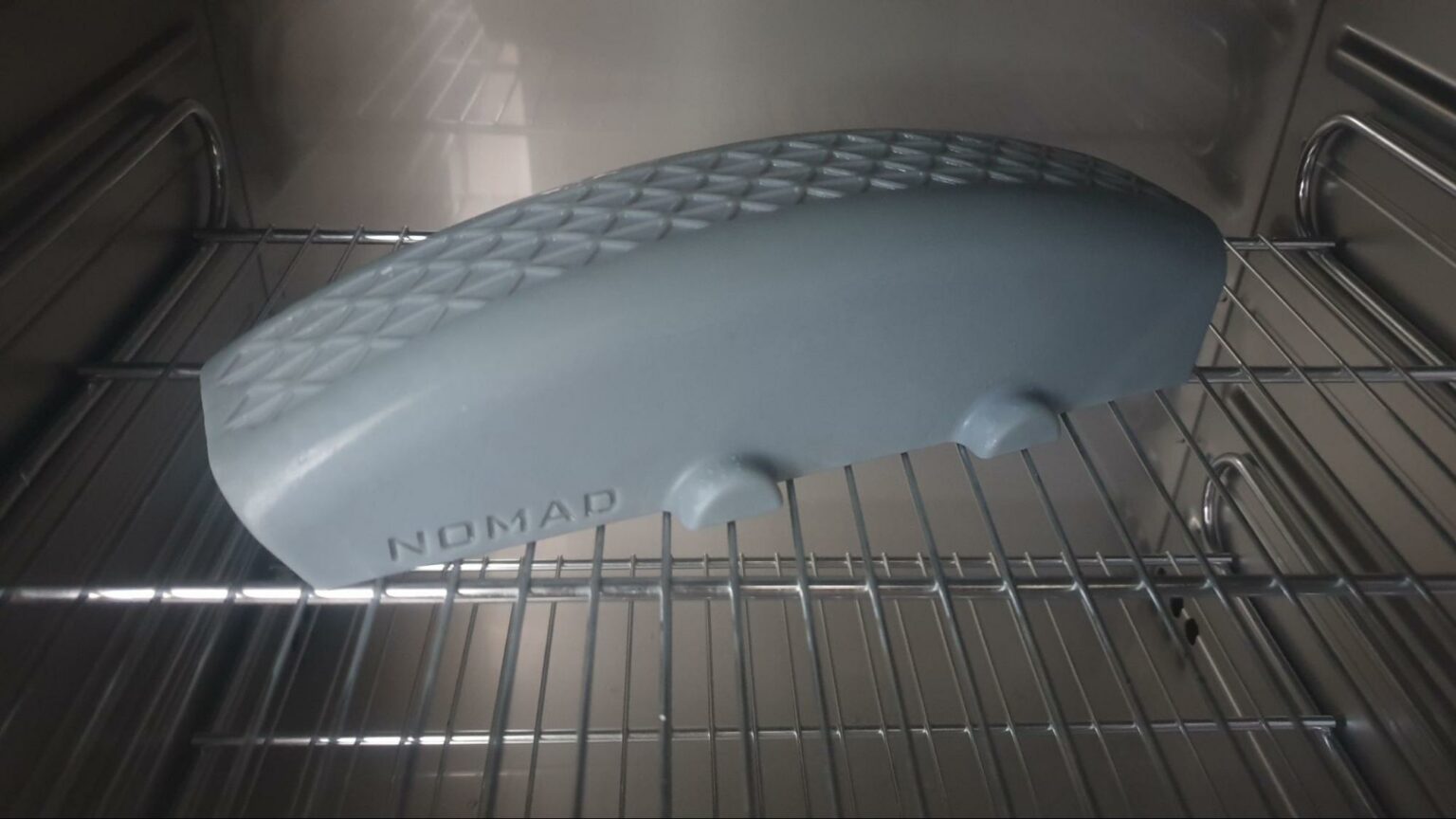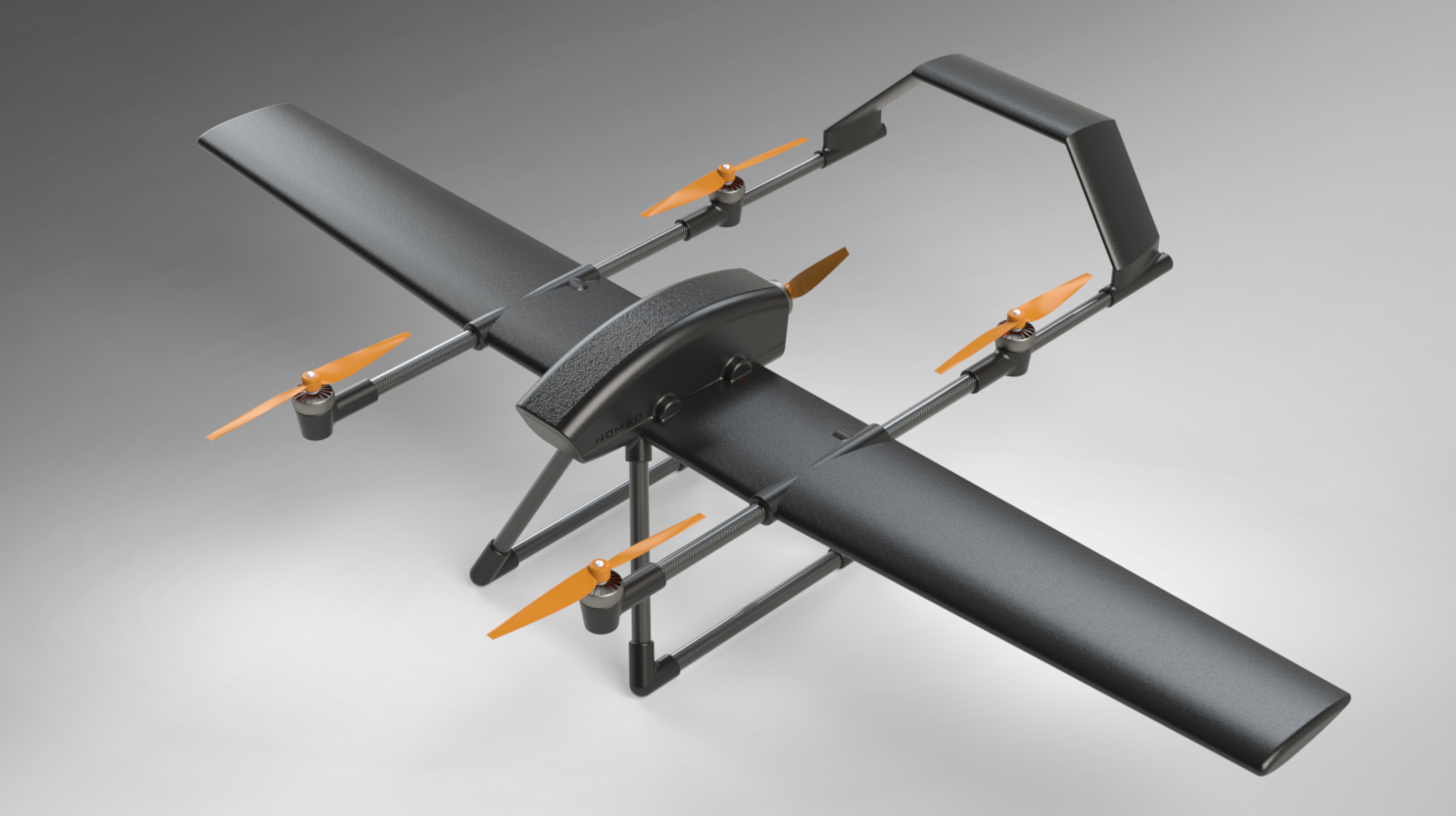UAE Firm 3D Prints Drones with Resin
Though unmanned aerial vehicles (UAVs) have always been popular for additive manufacturing (AM) applications, 3D printed drones are receiving increased attention more recently for their use as attritable weapons. In particular, the U.S. Department of Defense is exploring the 3D printing of drone swarms through its Replicator program.
Most often, material extrusion is seen as the obvious choice, given the general strength of thermoplastics over thermosets. However, a new generation of photopolymer resins are emerging for use in vat photopolymerization technologies that may change this. According to 3Dprinting.com, one company in the United Arab Emirates, Nomad Prototypes, has relied on low-cost masked stereolithography (mSLA) to 3D print a quadcopter UAV from Liqcreate StrongX resin. Its founder, Phillip Keane, suggests that the combination of mSLA and dual-curing resin could lead to stronger 3D printed drones than possible with fused deposition modeling (FDM).
“Filament extrusion is fine for small multirotors, and small hobby-grade fixed wing aircraft, but really runs into issues when scaling up in size for professional-grade fixed wing drones,” said Keane. “FDM results in anisotropic prints, and the complex dynamic forces acting on fixed wing aircraft, regular extrusion just doesn’t cut it in terms of strength and weight. The whole point of 3D printing drones is to minimize weight, but when there is a tendency to add more layers to the structure walls to compensate for the anisotropy, you quickly reach a point where you’re better off just using fiberglass or carbon fiber.”
As in other applications where fiber reinforcement is too costly and labor-intensive, UAV production stands to benefit significantly from AM. Keane began researching drones while obtaining his master’s degree at NTU Singapore, spending the last decade exploring everything from FDM to selective laser sintering and Multi Jet Fusion to 3D print drones.
Most recently, through Nomad Prototypes, Keane landed on mSLA. Because Liqcreate Strong X is a dual-cure resin, it is first hardened with ultraviolet (UV) light before it is cured thermally to increase its strength. The drone is then sandblasted and coated in ceramic to increase durability and UV resistance. According to Keane, Strong X is one of the strongest resins on the market.

The drone shell, designed with nTop, about to be cured thermally in an oven.
“With the Liqcreate resin and nTop software, we have been able to create wall thicknesses measuring just 500 microns thick,” said Keane. “Without the lattices holding the skin together, the thin walls would usually just collapse during the resin printing process. But the lattice serves as a scaffold during printing, which means we can print skin elements much thinner than even Liqcreate thought possible.”
In addition to the 3D printed shell, the drone features a 7000 mAH battery, which allows it to fly for 37 minutes without a payload and 22 minutes carrying 500 grams of weight. Nomad is already working on its second-generation model, which will be a modular UAV that can be converted to a fixed wing, vertical take-off and landing (VTOL) craft. The drone will be made with strong, flexible resin and feature topology optimized wings designed to be thin and durable, which the company claims is not possible with FDM.

A rendering of the second-gen design.
If successful, Nomad aims to scale up to a 3.2-meter wingspan, this time 3D printing the UAV with fused granule fabrication (FGF) using high-strength pellets. The UAE firm has developed a custom-sizing algorithm using MATLAB to create geometries for fixed wing aircraft. The second generation, fixed-wing resin drone will be used to validate the algorithm before the larger, FGF craft is made.
“Some of these new pellets have incredibly high carbon fiber loads, reaching up to 50% carbon fiber. This would be impossible to print in filament format, as the filament is so stiff, it would snap as soon as it reaches the extruder,” said Keane. “These pellets can print parts that are over 3x the strength of regular FDM filaments, so the problems caused by anisotropy are reduced. We can effectively print thinner parts, and still maintain a high degree of strength in the structure, which makes pellets viable for fixed wing drones.”
The company plans to showcase its technology at the Make it in the Emirates pitch contest at Abu Dhabi Energy Center on May 27, 2024. Regardless of the outcome of the event, 3D printing drones—by air, land, or sea—seems to be the way things are heading, for both war and peace.
All images courtesy of Phillip Keane.
Subscribe to Our Email Newsletter
Stay up-to-date on all the latest news from the 3D printing industry and receive information and offers from third party vendors.
You May Also Like
Powering the Future: EOS’s Fabian Alefeld on Additive Manufacturing
In the world of 3D printing, innovation is a constant. However, the industry faces a complex landscape marked by opportunities and challenges. In 2023, the global 3D printing market totaled...
3D Printing Webinar and Event Roundup: May 26, 2024
In the weekly 3D Printing Webinar and Event Roundup, ASTM’s AMCOE concludes its professional certificate course, while Solid Print3D will offer a masterclass on Form 4 materials. If you’re in...
ISRO Successfully Tests 3D-Printed Liquid Rocket Engine for 665 Seconds
On May 9, 2024, the Indian Space Research Organization (ISRO) successfully conducted a long-duration hot test of a 3D printed liquid rocket engine. The tested engine, known as PS4, is...
Printing Money Episode 17: Recent 3D Printing Deals, with Alex Kingsbury
Printing Money is back with Episode 17! Our host, NewCap Partners‘ Danny Piper, is joined by Alex Kingsbury for this episode, so you can prepare yourself for smart coverage laced...



































